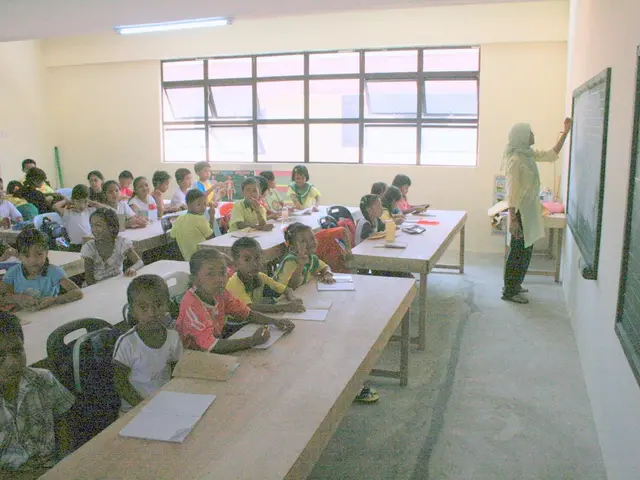Strategies for ESOL Students in Managing Group Interactions
Navigating the complex world of group dynamics is an essential skill for learners of English as a Second Language (ESL). Group dynamics involve the manner in which individuals interact and communicate within a collective setting, encompassing the roles they play and how these roles affect the group overall. Mastering these dynamics can significantly boost one's ability to learn effectively, collaborate successfully, and bridge cultural gaps.
For example, engaging in group projects or conversations with native English speakers can be a game-changer for language proficiency and cultural understanding. However, obstacles like language barriers, cultural differences, and unfamiliarity with group roles can inhibit an ESL learner's full integration and development. Therefore, understanding how to manage and excel in group settings not only aids in language learning but also builds crucial interpersonal and professional skills.
Recognizing Group Roles and Responsibilities
Understanding the various roles individuals may assume in a group is a key initial step. Common roles include leaders, facilitators, recorders, and timekeepers, each serving a purpose that supports group objectives. ESL learners should identify these roles to find where they can best contribute. By observing interactions and assessing their strengths, ESL learners can select a role that aligns with their language skills while also promoting group cohesion.
For instance, in a study group, an ESL learner might excel as a timekeeper or recorder, positions that require listening and summarizing-core language practice. They can then observe and gradually participate in discussions led by native speakers, bolstering their confidence to take on a facilitative role in the future. By working through various group roles, ESL learners cultivate both language skills and team collaboration abilities.
Navigating Multicultural Communication
Effective communication is the key to successful group dynamics, particularly in multicultural settings. ESL learners must adapt to different communication styles and cultural nuances that inform group interactions. This process goes beyond mere translation; it requires understanding context, tone, body language, and cultural references.
An example would be an ESL student participating in a multinational business workshop. Informal group discussions may include idioms or references unfamiliar to an ESL learner. It is crucial for learners to remain attentive, ask clarifying questions, and be honest when they don't understand something. Encouraging peers to simplify language or explain unfamiliar concepts ensures participation is inclusive and productive.
- Pay heed to cultural norms.
- Utilize active listening techniques.
- Seek clear feedback to improve communication.
Bolstering Confidence and Assertiveness
Building self-assurance and assertiveness is vital for effective group participation for ESL learners. Confidence enables learners to express opinions, take the lead, and engage in meaningful discussions. Assertiveness, on the other hand, is about expressing thoughts respectfully and sticking to one's ideas, even in unfamiliar linguistic situations.
Consider an ESL learner participating in a classroom debate. Initially, they might be hesitant, refraining from speaking due to fear of language mistakes. However, when they practice their arguments, familiarize themselves with relevant vocabulary, and rehearse possible scenarios, their self-confidence grows. Starting with smaller discussions can help them build confidence before tackling larger group interactions. Encouragement from group members who provide positive feedback also bolsters this confidence. Assertiveness develops through gradual experiments with participation.
Leveraging Technology for Enhanced Collaboration
Technology acts as a bridge for ESL learners in navigating group dynamics by offering tools that facilitate interaction, understanding, and collaboration. From messaging apps to collaborative platforms and language software, these tools support group functioning despite linguistic disparities.
A hypothetical scenario would be an international team collaborating over a digital platform on a project. Using translation apps can bridge immediate understanding gaps, while collaborative tools like Google Docs enable everyone, regardless of language proficiency, to contribute effectively. Real-time editing provides non-native speakers an opportunity to enhance grammar and vocabulary as they write. Video conferencing tools help catch verbal and non-verbal cues vital for comprehension. Thus, careful use of technology can minimize language barriers and foster smoother group dynamics.
The Role of Feedback in Group Learning
Feedback is integral to group dynamics, fundamental for improvement and growth. It enables ESL learners to recognize their strengths and identify areas that require improvement. Constructive feedback promotes a learning culture and adaptation, crucial for language proficiency.
Consider an ESL learner working within a peer feedback group responsible for evaluating presentations. Receiving varied perspectives helps them understand different communication facets and learn appropriate phrasing and pronunciation. Offering feedback forces one to articulate thoughts clearly, encouraging an active role in group learning dynamics. Groups that incorporate structured feedback sessions with kindness and precision foster mutual respect and create a supportive environment for all members.
Overcoming Challenges and Conflict Resolution
Encountering challenges and resolving conflicts are inevitable in any group setting but offer valuable learning experiences for ESL learners. Language differences may lead to misunderstandings; however, proactive strategies can mitigate such conflicts.
In a team project, for example, differing opinions might arise regarding final decisions. An ESL learner, recognizing potential conflict due to misunderstandings, could suggest summarizing group agreements in writing to avoid ambiguity. Taking initiative to mediate discussions by paraphrasing understood points can also aid in resolving misunderstandings while practicing language skills. By focusing on collaborative resolutions, ESL learners can become effective conflict solvers, enriching their communication toolkit.
Conclusion: Embracing Group Dynamics for Language and Personal Growth
Successfully navigating group dynamics is crucial for ESL learners seeking to enhance their language skills and seamlessly integrate into diverse environments. By understanding group roles, refining communication, building confidence, leveraging technology, valuing feedback, and tackling conflicts, learners can view group dynamics as a catalyst for personal and linguistic growth. Each interaction, whether in educational, professional, or social settings, becomes an opportunity to practice and perfect these skills.
The learning journey continues for ESL learners. Seeking diverse group experiences, displaying curiosity, and continuously reflecting on and learning from each interaction are keys for not only mastering English but also thriving in multicultural and collaborative spaces.
Understanding various roles in a group and aligning their participation with those roles helps ESL learners build language skills and collaboration abilities, as observed in scenarios like being a timekeeper or recorder in a study group.
By utilizing active listening techniques, adapting to different communication styles, and seeking clear feedback, ESL learners can effectively navigate multicultural settings and strengthen their language abilities in both professional and social environments.







